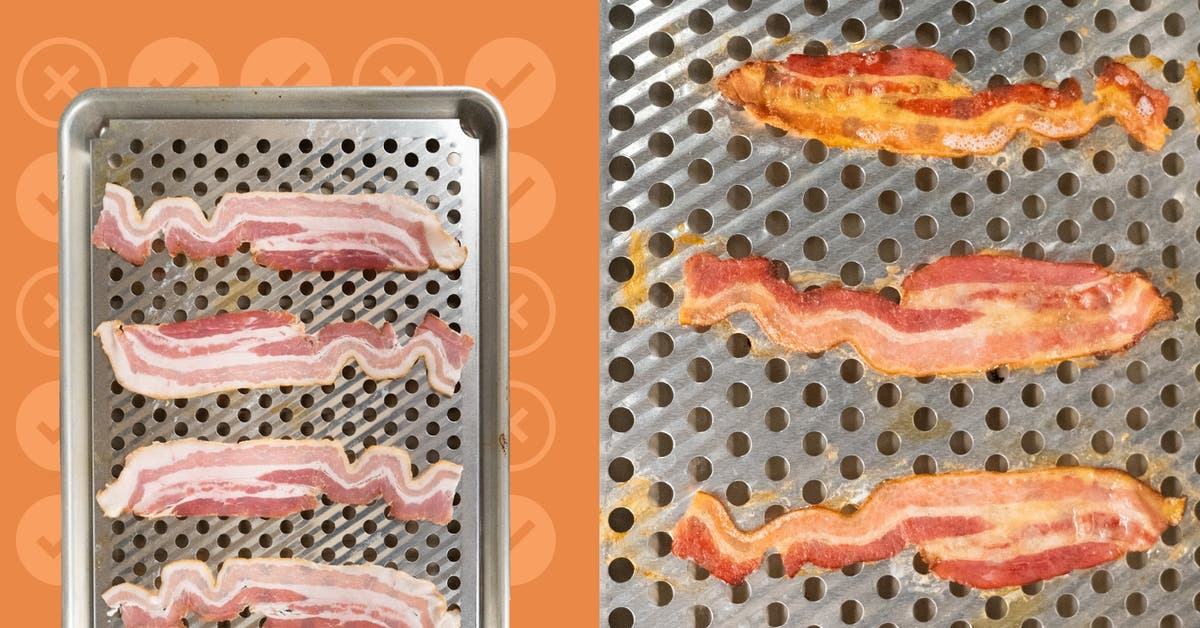I pitted Nordic Ware’s rack against the wire rack I’ve had for years. First, I used them to bake crispy foods, placing each rack inside a sheet pan to maximize airflow. In almost every scenario, the traditional wire rack performed better than, or equally as well as, Nordic Ware’s rack.
I conducted a head-to-head test by cooking chicken wings and bacon on half-sheet pans lined with Nordic Ware’s rack on one and a traditional wire rack on the other. In these cases, the racks performed very similarly, and the differences were negligible.
After I baked the wings for 25 minutes at 425 ºF, the batches were mostly indistinguishable. The only difference was that the wings on the Nordic Ware rack were ever-so-slightly more browned along the bottom, likely due to the direct contact with the hot aluminum surface. However, it didn’t substantially improve the crispiness of the wings.

I baked bacon strips for 14 minutes at 400 ºF on a traditional wire cooling rack and the Nordic Ware rack; the differences between the batches were imperceptible once they had fully cooled. The bacon remained chewy in both cases.
When I repeated the test by cooking frozen french fries, the differences between the two batches were far more notable.
It took 15 minutes longer than the time estimated on the packaging instructions (20 to 25 minutes at 425 ºF), 40 minutes total. The fries toward the center steamed rather than crisped, and the ones on the edges nearly burned. I attributed this to the round perforations because they don’t offer as much airflow as the traditional wire cooling rack.
A few minutes into the fries’ cooking time, I noticed a loud popping sound caused by the Nordic Ware rack warping, a key marker of thermal expansion and a possible sign of uneven heat distribution. However, this didn’t seem to impact how the fries cooked, and the rack returned to its original shape once it had cooled.

The fries that cooked on a half-sheet pan lined with a traditional wire cooling rack were ready (and nicely browned) in 32 minutes. Although both methods surpassed the recommended cooking time, the batch I made on the wire cooling rack was crispier and more evenly cooked.






0 Comments